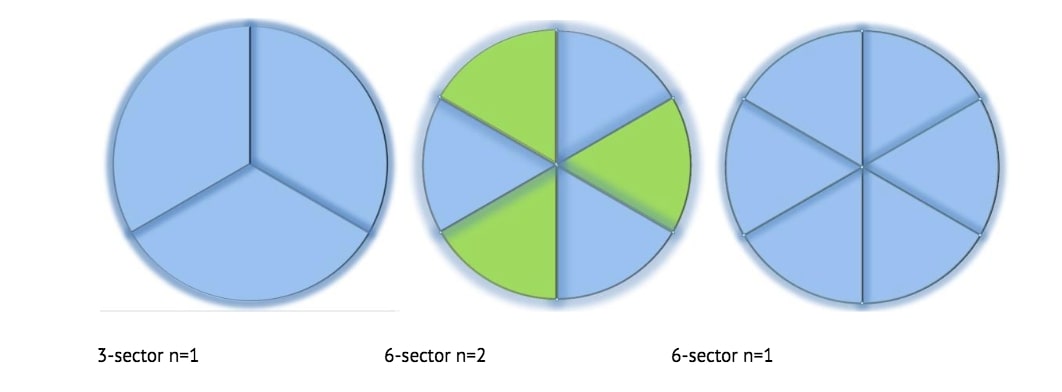A critical challenge facing 4G LTE fixed wireless operators is how to cost-effectively increase site capacity. Although there are many options available, including Massive MIMO, sectorization is one of the most cost effective, expedient and practical means of doubling site capacity.
Most LTE base station sites are deployed with the traditional 3-sector configuration. Not all of these sites require the significant added capacity offered by Massive MIMO solutions nor can they afford the higher prices and added weight that come with Massive MIMO. A new Twin–Beam Antenna such as ones designed by Alpha Wireless allows FWA operators to replace the antennas of a traditional 3-sector site, add the necessary eNB radios and instantly double the site capacity of their FWA LTE deployments. The Twin-Beam Antenna looks identical to a single beam antenna in physical size, weight and wind loading but accommodates two narrow beams. Therefore, three Twin-Beam antennas will convert a 3-sector site into a 6-sector site without incurring additional costs and delays associated with site approval. Because the site appearance stays identical, incremental ongoing site rental expenses are usually avoided.
6-sector deployments can utilize a 2×2 antenna configuration or a 4×4 antenna configuration in each sector. New multi-channel RRU’s enable radio upgrades without occupying additional space on the tower. In a 2×2 deployment, an operator can use three 4×4 RRU’s and connect each RRU to a twin beam antenna, thereby creating a 6-sector 2×2 site. In a 4×4 deployment, an operator can use three 8×8 RRU’s and connect each RRU to a twin beam antenna, thereby creating a 6-sector 4×4 site.
6-sector sites can be deployed with n=1 or n=2 frequency reuse configurations, each with its own advantages and challenges. Traditionally, interference between adjacent sectors at an LTE site had limited performance at the sector edge. With n=2 frequency reuse, network designers can virtually eliminate adjacent sector interference but requires the operator to own double the spectrum bandwidth, or to obtain additional spectrum at potentially significant cost. Innovations in LTE interference mitigation algorithms such as CoMP (Co-ordinated Multi-Point) and eICIC (enhanced Inter-Cell Interference Coordination) enable n=1 frequency reuse, which makes efficient use of spectrum resources while delivering uniform throughput to all users—independent of their position relative to the sector edges.

In a technical white paper, Wireless 20/20 examines the technical drivers and economic motivations of multi-sector deployments. The analysis is backed up with field test results that demonstrate the importance of interference mitigation in achieving optimum results. The Wireless 20/20 WiROI Tool is used to quantify key performance indicators (KPI’s), such as cost per GByte and CapEx per Subscriber as well as Network OpEx per Subscriber in order to enable comparison with alternate solutions.
Twin beam antenna in four sector deployments
Some fixed broadband wireless operators deploy networks with 4 sector base stations using n=2 frequency reuse. The Alpha Twin Beam antenna can be used in these situations to convert a 4-sector base station into an 8 sector base station by replacing the original 90 degree antenna with Twin Beam antennas. The antenna configuration will look identical from the size, weight and wind loading point of view. By using additional RRU’s to light up the four additional sectors, the operator instantly benefits from the added capacity offered by the eight-sector base station.

One of the main reasons to deploy a network with n=2 frequency reuse is to avoid intersector interference, which has traditionally caused tremendous support issues for fixed BWA operators. Using n=2 frequency reuse, the operator pays a higher price of using more spectrum but benefits from provisioning uniform service across its coverage area. Households that are located at the sector edge enjoy the same performance as households located at the center of a sector. By moving to an 8-sector deployment, all of the benefits of lessened interference offered by n=2 are still enjoyed while a gain of 2x of capaciity is realized due to sectorization.
LTE operators can upgrade 3-Sector LTE sites to 6-Sector without incurring additional site CapEx or OpEx and by combining twin-beam antenna with the latest LTE interference mitigation technology.
For information or to access the full white paper, click here.

